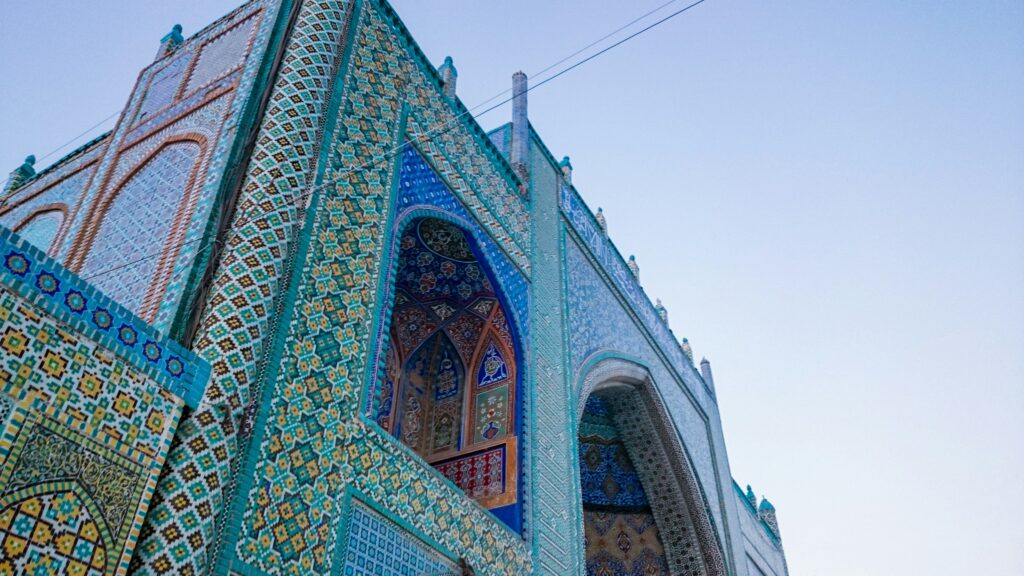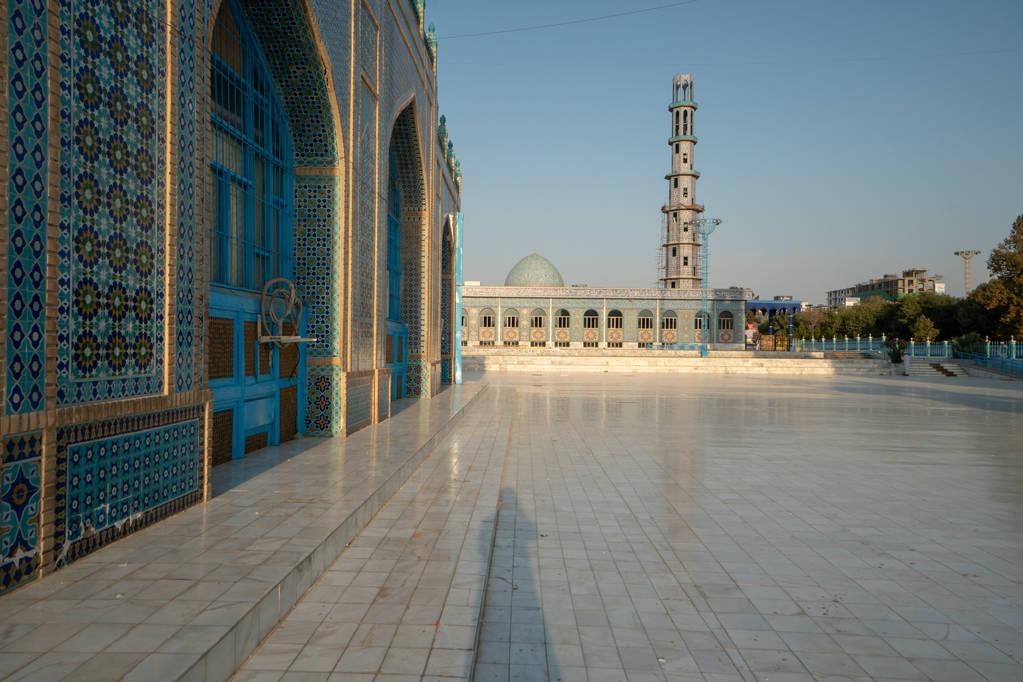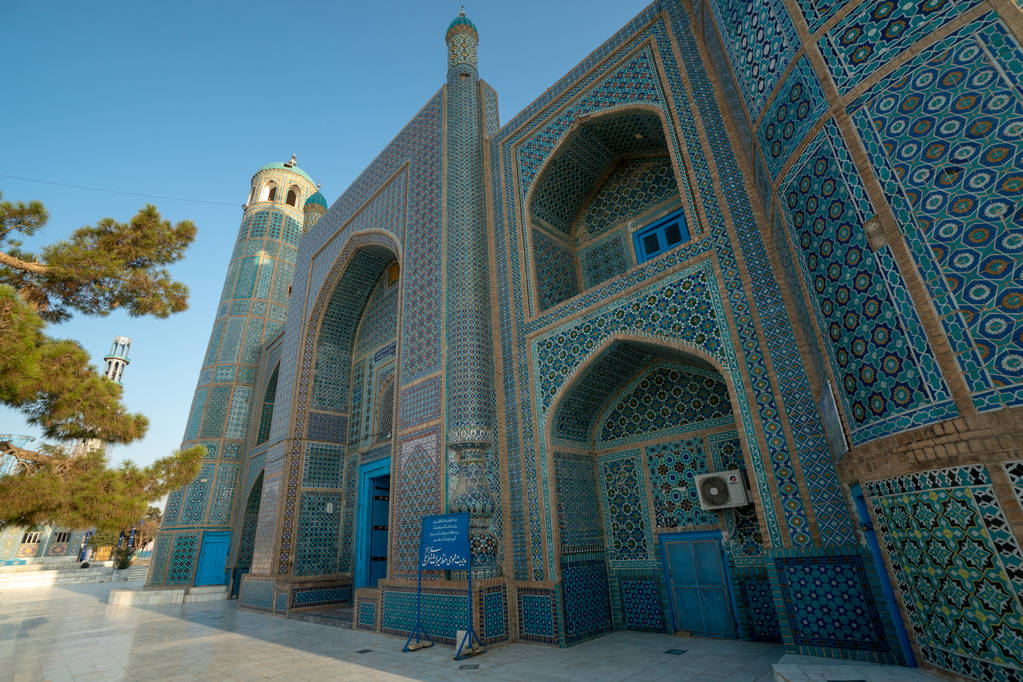Mazar-i-Sharif, often simply referred to as Mazar, is one of Afghanistan’s most important cities, known for its rich history, cultural significance, and stunning architecture. Situated in the northern part of the country, Mazar-i-Sharif has long served as a vital center for trade, culture, and spirituality. It is especially revered for its connection to Ali ibn Abi Talib, the cousin and son-in-law of the Prophet Muhammad, and is famous for the magnificent Blue Mosque, which draws pilgrims and tourists alike.
Historical Overview
Mazar-i-Sharif’s history dates back thousands of years. The city has been a significant center during various empires, including the Persian, Macedonian, and Asian empires. Its strategic location along the Silk Road facilitated trade and cultural exchanges, establishing it as a melting pot of diverse influences.

A particularly significant event in Mazar’s history is the arrival of the Islamic faith. Following the Islamic conquests of the 7th century, Mazar-i-Sharif became a prominent center for Islamic scholarship and culture. The city’s importance grew further during the Timurid and Mughal periods, which saw significant architectural and cultural advancements.
Mazar-i-Sharif became a focal point for Shiite Muslims due to its association with the shrine of Ali ibn Abi Talib, who is believed to be buried in the city. This connection lends Mazar a distinctive spiritual significance, attracting pilgrims from across Afghanistan and beyond.
The Blue Mosque: A Masterpiece of Architecture
The Mosque of the Cloak of the Prophet (Masjid-i Sharif), commonly known as the Blue Mosque, is one of the most iconic landmarks in Mazar-i-Sharif. The mosque is renowned for its stunning blue tiles and intricate Persian architecture, reflecting the artistic brilliance of the Timurid era.
Legend has it that the mosque houses a cloak belonging to the Prophet Muhammad, further enhancing its spiritual significance. The mosque’s vibrant blue domes and minarets rise majestically over the city, serving as a symbol of hope and devotion for both locals and visitors.
Inside, the mosque is adorned with stunning calligraphy and intricate tile work, creating a serene atmosphere for worship and reflection. Festivals such as Nawruz (Persian New Year) see huge gatherings at the mosque, where people from diverse backgrounds come together to celebrate their cultural heritage.
The Blue Mosque is not only a place of worship but also a focal point for cultural and social gatherings, illustrating the unity and resilience of the Afghan people.
Cultural Heritage and Festivals
Mazar-i-Sharif is a hub of cultural diversity, with various ethnic groups, including Tajiks, Uzbeks, and Hazaras. This diversity is reflected in the city’s vibrant traditions, music, and cuisine, all of which blend to create a unique cultural identity.
More:Read about on Kabul: The Resilient Heart of Afghanistan
Traditional Afghan music resonates throughout the streets of Mazar-i-Sharif, with musicians often seen playing instruments like the rubab and . Celebrations, such as weddings and religious festivals, are marked by lively performances that showcase the region’s rich musical heritage.
Culinary traditions in Mazar are equally diverse, featuring dishes such as qabuli palaw (a rice dish with raisins and carrots), mantu (dumplings), and ashak (leek dumplings). The local cuisine reflects a blend of flavors from Central Asia, enhancing the city’s culinary landscape.
The city is also known for its vibrant bazaars, such as the Mazar-i-Sharif where artisans sell traditional handicrafts, carpets, textiles, and spices. These bustling markets provide a glimpse into the daily life of the locals and highlight the city’s rich artisanal heritage.
Challenges and Resilience
Like many cities in Afghanistan, Mazar-i-Sharif has faced its share of challenges, particularly in recent decades. The prolonged conflict in the region has had significant impacts on infrastructure, security, and daily life. However, the spirit of the people of Mazar remains resilient.
In the face of adversity, Mazar has seen various efforts toward reconstruction and development. Local communities, in collaboration with international organizations, are working to rebuild infrastructure, improve education, and promote healthcare services. The city has become a symbol of hope and perseverance for many Afghans, illustrating their determination to recover and thrive.

Education and Opportunity
Education is a key priority for the people of Mazar. Schools and educational institutions are working hard to provide quality education to children, particularly girls, who have historically faced barriers to access.
Despite challenges, local organizations are actively promoting education for marginalized groups, empowering young people with the skills they need to contribute to their communities. Higher education institutions in Mazar are also emerging, offering opportunities for students to pursue various fields of study.
The commitment to education and empowerment is vital for the city’s future. Increasing educational opportunities will play a crucial role in shaping a more prosperous and inclusive society, providing the next generation with the tools needed to navigate the complexities of the modern world.
The Future of Mazar-i-Sharif
The future of Mazar-i-Sharif holds both challenges and potential. As the country strives for stability, Mazar has the opportunity to become a key player in Afghanistan’s recovery. Political stability, sustainable development, and community engagement will be essential in shaping the city’s future.
More: Wanted to download Odisha Magazines, visit here
Promoting tourism could be a significant driver of economic growth. Mazar’s rich history, cultural heritage, and stunning landmarks make it an attractive destination for travelers. Efforts to enhance security and infrastructure can facilitate safer access for visitors, fostering cultural understanding and appreciation.
Engaging local communities in tourism planning can ensure that the economic benefits reach those who need them most while preserving the city’s unique heritage. Initiatives aimed at promoting local crafts and cultural experiences can enhance the visitor experience while supporting artisans and businesses.
Conclusion
Mazar-i-Sharif is a city that embodies the resilience, diversity, and rich cultural heritage of Afghanistan. The stunning Blue Mosque, the vibrant bazaars, and the spirit of its people create a unique tapestry that captures the essence of this remarkable city.

As Mazar navigates its challenges and embraces opportunities, it stands as a symbol of hope for a brighter future. The story of Mazar is one of strength, unity, and the enduring desire of its people to thrive against all odds. With ongoing efforts to promote education, cultural preservation, and sustainable development, Mazar-i-Sharif has the potential to shine as a beacon of hope and prosperity in Afghanistan.
FAQ For Mazar-i-Sharif: The Spiritual Heart of Afghanistan
Where is Mazar-i-Sharif located?
Mazar-i-Sharif is situated in northern Afghanistan, approximately 200 kilometers northwest of Kabul. It is the capital of Balkh Province and an important cultural and spiritual center
What is the historical significance of Mazar-i-Sharif?
Mazar-i-Sharif has a rich history that dates back to ancient times. It is renowned for its significance in Islamic culture, being the site of the famous Blue Mosque (or Shrine of Ali), which attracts pilgrims from across the country and beyond
What is the atmosphere like in Mazar-i-Sharif?
Mazar-i-Sharif has a spiritual and welcoming atmosphere, characterized by its rich cultural heritage. The city is known for its diverse population and has a vibrant mix of traditions and customs
Is it safe to visit Mazar-i-Sharif?
hile Mazar-i-Sharif is often considered one of the safer cities in Afghanistan, security conditions can fluctuate. It’s crucial to stay updated on travel advisories and consult with local sources before planning your visit.
What is the best time to visit Mazar-i-Sharif?
The best times to visit are in spring (March to May) and autumn (September to November) when the weather is generally mild and pleasant for exploring the city.

